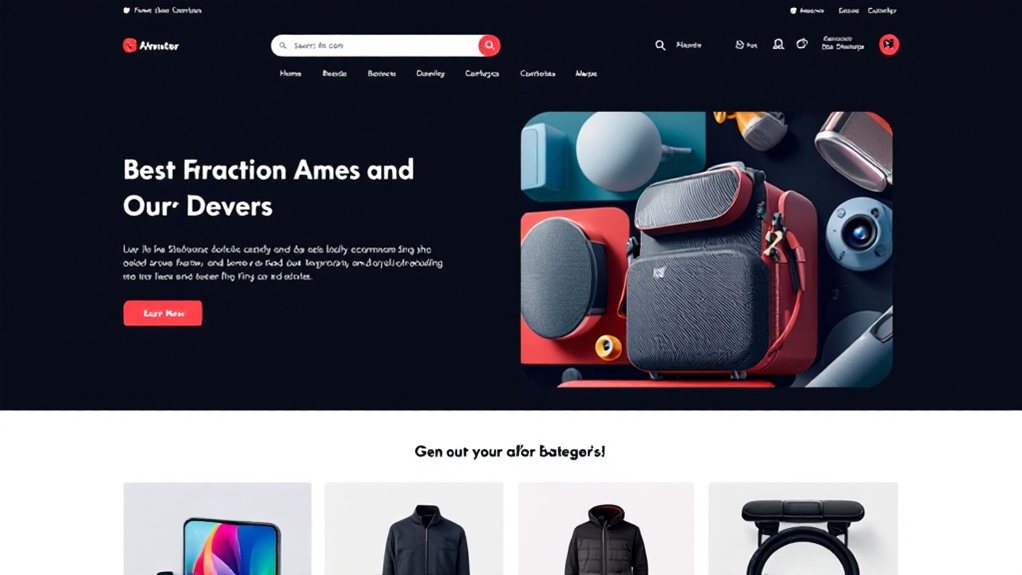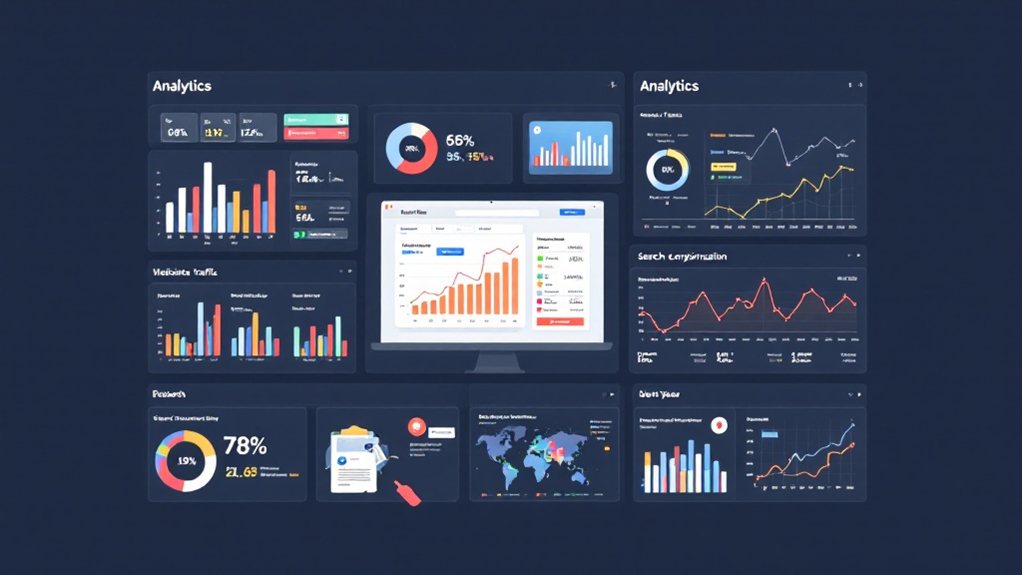Optimize your product pages with concise, keyword-rich titles and descriptions. Leverage relevant keywords throughout your content to capture customer searches. Maintain a clear, intuitive site structure for easy navigation. Utilize social media to amplify your brand and engage with followers. Monitor your website's performance to identify areas for improvement. Implementing these five SEO tips can help you attract more qualified traffic and boost your online sales. Want to dive deeper into these strategies?
Key Takeaways
- Optimize product pages with concise, keyword-rich titles, descriptions, and enhanced images to improve search engine visibility.
- Conduct thorough keyword research to identify customer search terms and incorporate them throughout the website content.
- Ensure a clear, intuitive site structure and navigation that guides users to desired products and categories.
- Leverage social media platforms to amplify the e-commerce brand and engage with potential customers.
- Continuously monitor website performance, analyze data, and make data-driven improvements to enhance user experience and conversions.
Optimize Product Pages for Search Engines

Optimizing your product pages is crucial for ensuring they appear prominently in search engine results. Focus on crafting concise, keyword-rich titles and descriptions that accurately reflect the content. Incorporate relevant product details, specifications, and benefits to provide users with the information they're seeking. Ensure your images are optimized with descriptive alt text, and consider including schema markup to enhance the display of your products in search results. Additionally, optimize your URLs by using clear, keyword-focused structures. Regular review and refinement of your product page content can significantly boost your e-commerce site's search engine visibility and drive more qualified traffic to your offerings.
Leverage Keyword Research and Targeted Content
Conducting comprehensive keyword research is key to crafting targeted content that resonates with your audience. Identify the terms and phrases your customers are using to search for products like yours. Analyze keyword intent and competition to prioritize the most valuable opportunities. Incorporate these keywords throughout your product descriptions, category pages, and blog content. But don't stuff keywords – write naturally for your readers, not search engines. Leverage long-tail keywords to capture more specific queries. Create content that answers your customers' questions and addresses their pain points. This targeted approach will improve your search visibility and drive more qualified traffic to your e-commerce site.
Improve Site Structure and Navigation

Alongside your content strategy, you'll want to optimize your e-commerce site's structure and navigation. A clear, intuitive hierarchy and navigation will help users find products quickly. Ensure your main categories and subcategories are easy to access, and use breadcrumbs to show users their current location. Implement effective search and filtering options so customers can refine results. Internal linking between related products and categories boosts discoverability. Don't forget mobile-friendliness – streamline navigation for smaller screens. With a user-focused site architecture, you'll enhance the shopping experience and encourage conversions.
Utilize Social Media Platforms
While optimizing your website's structure is crucial, don't overlook the power of social media platforms. Leverage popular networks like Facebook, Instagram, and Twitter to amplify your e-commerce brand and reach a wider audience. Share visually appealing product photos, engage with your followers, and promote your latest offers. This not only drives traffic to your site but also builds brand loyalty. Integrate social sharing buttons on your product pages to encourage customers to spread the word. Additionally, consider running targeted social media ads to attract new potential customers. By seamlessly incorporating social media into your SEO strategy, you can significantly boost your e-commerce site's visibility and sales.
Monitor and Analyze Website Performance

Monitoring and analyzing your website's performance is crucial for optimizing your e-commerce SEO strategy. Track key metrics like page views, bounce rate, and conversion rate to identify areas for improvement. Use Google Analytics to gain valuable insights into your audience and their behavior. Regularly review your search engine rankings and monitor any fluctuations. Pay attention to page load times, as they can significantly impact user experience and search engine rankings. Utilize heat maps and session recordings to understand how users interact with your site. Continually test and optimize your content, product pages, and user experience to drive more traffic and conversions.

